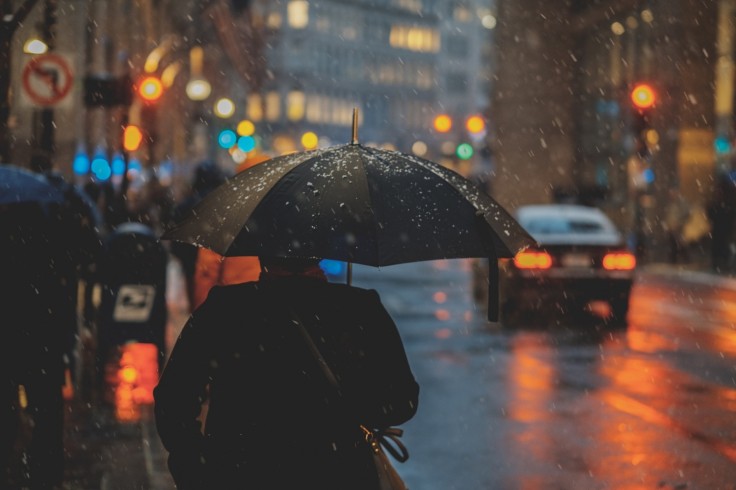
We often like to view the past through rose-tinted glasses. Things were simpler, happier, and more reliable. Some of that can be attributed to the "hindsight is 20/20" rule, where we don't have the fear of uncertainty. However, sometimes we can take off those rose-tinted glasses and the past really was better. Case in point: The US now suffers over twice as many power outages from severe weather compared to 20 years ago. This much of an increase in such a relatively short amount of time is alarming, and there are a number of causes. The overall power infrastructure in the US has been deteriorating and not keeping up with the maintenance required for basic service, let alone the increases in demand each year. Climate change continues to introduce more and more violent weather, which causes the actual outages. Adding to this, the damage from extreme weather has caused the infrastructure to further deteriorate, which all told leads to double the outages.
What can be done about this? For individuals this increase is a real problem, but for businesses, unexpected outages can be disastrous. The solutions are expensive and will take time, and even then will not completely fix the problem. Thankfully though, there are some things that businesses can do to help mitigate the problem and better prepare for when outages happen.
Battered Infrastructure
The electrical grid in the US is constantly being repaired and maintained, but it is a massive and costly infrastructure that has not kept up with the pace of growth or needed maintenance. One of the most famous examples of this is the fact that California's deadliest wildfire, the Camp Fire, was likely started from an electrical line that was nearly 100 years old. It was no surprise that parts of it had worn to the point of breaking, which cost human lives and untold damage to habitat, homes, and businesses.
This is not a lone example, and has become a well-known problem. However, with massive costs involved with proper maintenance and repair, it's unlikely that power companies will quickly improve the grid to what it needs to be. In addition to this, the rise in extreme weather has not done the infrastructure any favors, and has even changed the models used to predict when maintenance is needed. If floods, fires, atmospheric rivers, and polar vortexes are more common today then the electrical grid will break more often. When we see a news story about a massive flood, a hurricane or major winter storm, this will inevitably have an impact on the infrastructure. If it doesn't cause a power outage, it has still suffered extreme wear that makes it more likely to fail during the next extreme weather event.
Mitigation and Preparedness
There is a lot of doom and gloom here, and frankly, it's not because of exaggeration. That said, we aren't completely helpless either, and businesses especially have the ability to be better prepared. There are two strategies that can help mitigate the doubled outages we face each year: A more distributed grid, and customized warning systems.
The more immediate solution is creating a customized warning system for your business. Instead of relying on someone constantly watching the weather forecast, improvements in technology have allowed businesses to tap directly into hyper local weather data through a historical weather API. This type of API can provide historical context for what to expect, accurate forecasts, and weather alerts for various events. Businesses can and should make use of this to better predict when outages may occur due to extreme weather. While the outages are inevitably going to happen, fair warning can go a long way to preventing issues caused by an unexpected loss of power. Businesses can pause on processes that are most vulnerable to damage caused when power cuts off, and can also prepare for any other issues that the extreme weather may bring.
As a longer term mitigation, some companies and even countries are working to implement distributed electrical grids, also called virtual power plants. Tesla installed a massive plant in Japan last year by placing over 300 powerwall units throughout Miyako-jima. These batteries store excess electricity and can release it back to the grid when needed. This helps to create more possible points of supply, many of which are much closer than the actual power plant and are therefore less vulnerable to outages. That said, this is certainly a mitigation and not a complete solution, as these battery farms are expensive and cannot yet supply all the electricity needed to handle current outage levels. Nonetheless, it is a step in the right direction and success has already been seen where other farms have been set up in Australia and California. If anything, business may want to consider installing their own Powerwalls or equivalent industrial battery storage solutions to handle brief outages; it is certainly not cheap, but the distributed grid roadmap is likely not going to become widespread for a long time.
What's Next?
As you can see, this is not a simple problem, and there are no simple solutions. Climate change is here, and extreme weather contributes heavily to the already problematic electrical grid. Businesses are at risk of paying for these losses through reduced productivity, wasted in-process material, or even safety issues. There are some solutions, such as early warning through weather API data and over the longer term potentially taking part in a distributed electrical grid. It's not a perfect solution but being prepared can make a major difference for any business, which is critical for adjusting to this new normal of increased power outages.









